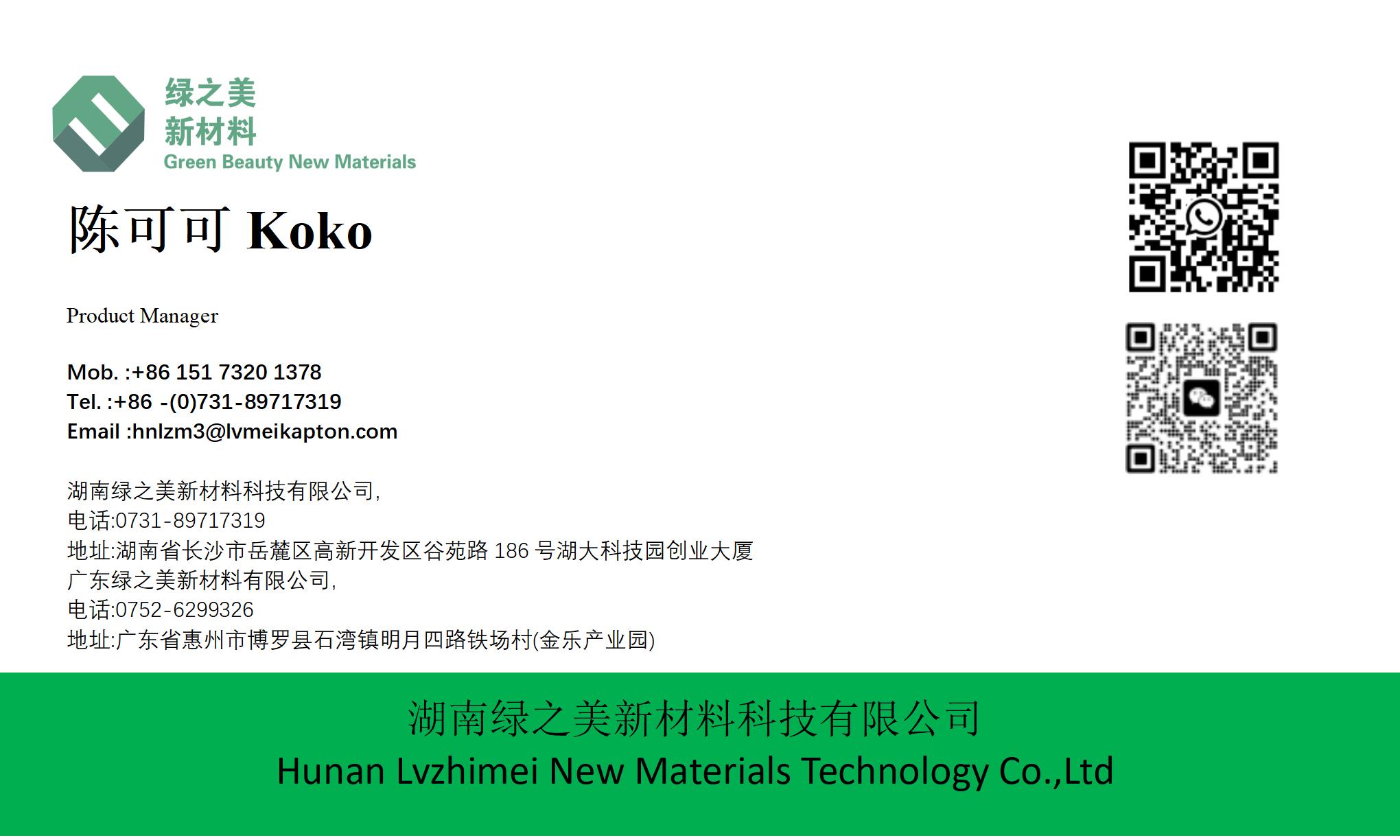hnlzm@lvmeikapton.com
+86 13787123465


Hunan Lvzhimei New Material Technology Co., Ltd.


NameDescriptionContent
Why Does Gold Finger Electronics Polyimide Tape Kapton Dominate Flexible Displays? |https://www.lvmeikapton.com/
Source:
|
Author:Koko Chan
|
Published time: 2025-04-22
|
112 Views
|
Share:
The rapid advancement of flexible display technology has revolutionized the consumer electronics industry, enabling innovative devices such as foldable smartphones, curved TVs, and wearable gadgets. However, the success of these applications hinges on the reliability of underlying materials. Among them, Gold Finger Electronics Polyimide Tape Kapton (hereafter referred to as "Kapton tape") has emerged as the industry standard for its superior mechanical, thermal, and electrical properties. This article delves into the technical advantages of Kapton tape, using the Samsung Galaxy Z Fold6 as a case study to demonstrate its pivotal role in overcoming challenges faced by flexible displays.
Why Does Gold Finger Electronics Polyimide Tape Kapton Dominate Flexible Displays?A Case Study of Samsung Galaxy Z Fold6
IntroductionThe rapid advancement of flexible display technology has revolutionized the consumer electronics industry, enabling innovative devices such as foldable smartphones, curved TVs, and wearable gadgets. However, the success of these applications hinges on the reliability of underlying materials. Among them, Gold Finger Electronics Polyimide Tape Kapton (hereafter referred to as "Kapton tape") has emerged as the industry standard for its superior mechanical, thermal, and electrical properties. This article delves into the technical advantages of Kapton tape, using the Samsung Galaxy Z Fold6 as a case study to demonstrate its pivotal role in overcoming challenges faced by flexible displays.
The Challenges of Flexible Display Technology
Flexible displays demand materials that can withstand repeated bending, extreme temperatures, and harsh environments while maintaining structural integrity and electrical performance. Traditional PET (Polyethylene Terephthalate) films, widely used in rigid displays, fail to meet these stringent requirements:
1.
Limited Durability: PET tapes typically support only 20,000 folding cycles, prone to cracking and delamination under prolonged mechanical stress.
2.
Temperature Sensitivity: PET's thermal resistance peaks at around 150°C, limiting its use in high-temperature processes like wave soldering.
3.
Electrical Insulation: PET's susceptibility to moisture and chemicals compromises long-term insulation reliability.
To bridge these gaps, PI Material High Temperature Resistant 300 Tape (PI tape, of which Kapton is a leading variant) offers a comprehensive solution.
Technical Advantages of Kapton Tape
1. Unmatched Mechanical Strength and FlexibilityKapton tape, made from polyimide films, boasts exceptional tensile strength (up to 125 N/10mm) and elongation rates (55-85%), enabling it to endure >200,000 folding cycles—a critical requirement for foldable devices like the Galaxy Z Fold6. This performance far surpasses Adhesive PET Material High Temperature Tape, which typically maxes out at 20,000 cycles.
2. Extreme Temperature ResistanceKapton's thermal stability ranges from -10°C to 300°C, with continuous operation at 180°C (UL-510 certification). This resilience ensures protection during soldering (260°C peak) and long-term device operation, preventing degradation or adhesive residue.
3. Superior Electrical InsulationKapton tape features dielectric strength up to 7200V, CTI >600V, and H-class insulation, shielding sensitive components from electrical interference. Its chemical inertness also resists corrosion from solvents and electrolytes.
4. Thin Profile for Space EfficiencyAchieving a thickness as low as 0.03mm, Kapton tape minimizes device bulk while maintaining functionality—a key factor in slimming down foldable phones like the Galaxy Z Fold6, which measures just 11mm when folded.
Samsung Galaxy Z Fold6: A Testimonial to Kapton Tape’s Superiority
Samsung's flagship foldable device, the Galaxy Z Fold6, embodies Kapton tape’s advantages through its design and performance:
Foldability and Durability
The device hinges rely on Kapton tape to protect delicate components during folding. Its high cycle endurance ensures the screen remains intact even after years of daily use, addressing consumer concerns about foldable device longevity.
Enhanced Heat Management
Kapton tape’s thermal conductivity aids in dissipating heat generated by the Snapdragon 8 Gen 3 processor and 4600mAh battery, preventing overheating—a common challenge in densely packed devices.
Electrical Protection for Complex Circuits
The device’s intricate circuitry, including the 7.6-inch main display and dual batteries, benefits from Kapton tape’s superior insulation, safeguarding against short circuits and signal interference.
Kapton vs. PET: A Comparative Analysis
Table 1: Key Performance Comparison
Property | Kapton Tape (PI Material) | PET Tape |
Thickness Range | 0.03mm - 0.125mm | 0.05mm - 0.2mm |
Fold Cycles | >200,000 | 20,000 - 50,000 |
Operating Temperature | -10°C to 300°C (short-term), 180°C (long-term) | -70°C to 150°C |
Dielectric Strength | 6000V - 7200V | 3000V - 5000V |
Chemical Resistance | Excellent (resistant to acids, solvents) | Moderate (prone to degradation) |
Cost | Higher | Lower |
Source: Data sourced from industry specifications and lab tests.
Despite PET tape’s lower cost, its performance deficits force manufacturers to prioritize durability and reliability—hence Kapton’s widespread adoption in premium devices.
Market Applications Beyond Samsung Foldables
Kapton tape’s versatility extends across industries:
●
Electronics: Protecting PCB gold fingers, insulating transformers, and securing lithium battery electrodes.
●
Military: Enabling ruggedized displays for wearable communication devices.
●
Automotive: Facilitating flexible dashboards and head-up displays.
●
Medical: Supporting durable, sterilizable equipment interfaces.
Overcoming Challenges: The Future of Kapton Tape
While Kapton tape dominates the market, ongoing research aims to:
1.
Reduce Costs: Developing thinner films without sacrificing performance.
2.
Improve Adhesion: Enhancing bond strength to new materials (e.g., UTG glass).
3.
Expand Functionality: Integrating anti-static or self-healing properties.
Conclusion
The dominance of Gold Finger Electronics Polyimide Tape Kapton in flexible displays stems from its unparalleled balance of mechanical robustness, thermal stability, and electrical insulation. As demonstrated by the Samsung Galaxy Z Fold6, Kapton tape enables devices to achieve both durability and slim form factors—a critical combination driving consumer adoption. While challenges remain, continuous innovation ensures Kapton tape will remain the cornerstone of flexible display technology for years to come.



Hunan Lvzhimei New Material Technology Co., Ltd.
Quick Links
Product Categories
© 2024 Hunan Lvzhimei New Material Technology Co., Ltd.All Rights Reserved. Designed by Erge
0731 - 89717319
hnlzm@lvmeikapton.com
+86 13787123465
Room 502, Chuangye Building, No186, Guyuan Road, High-Tech District, Changsha, Hunan, China
CONTACT



